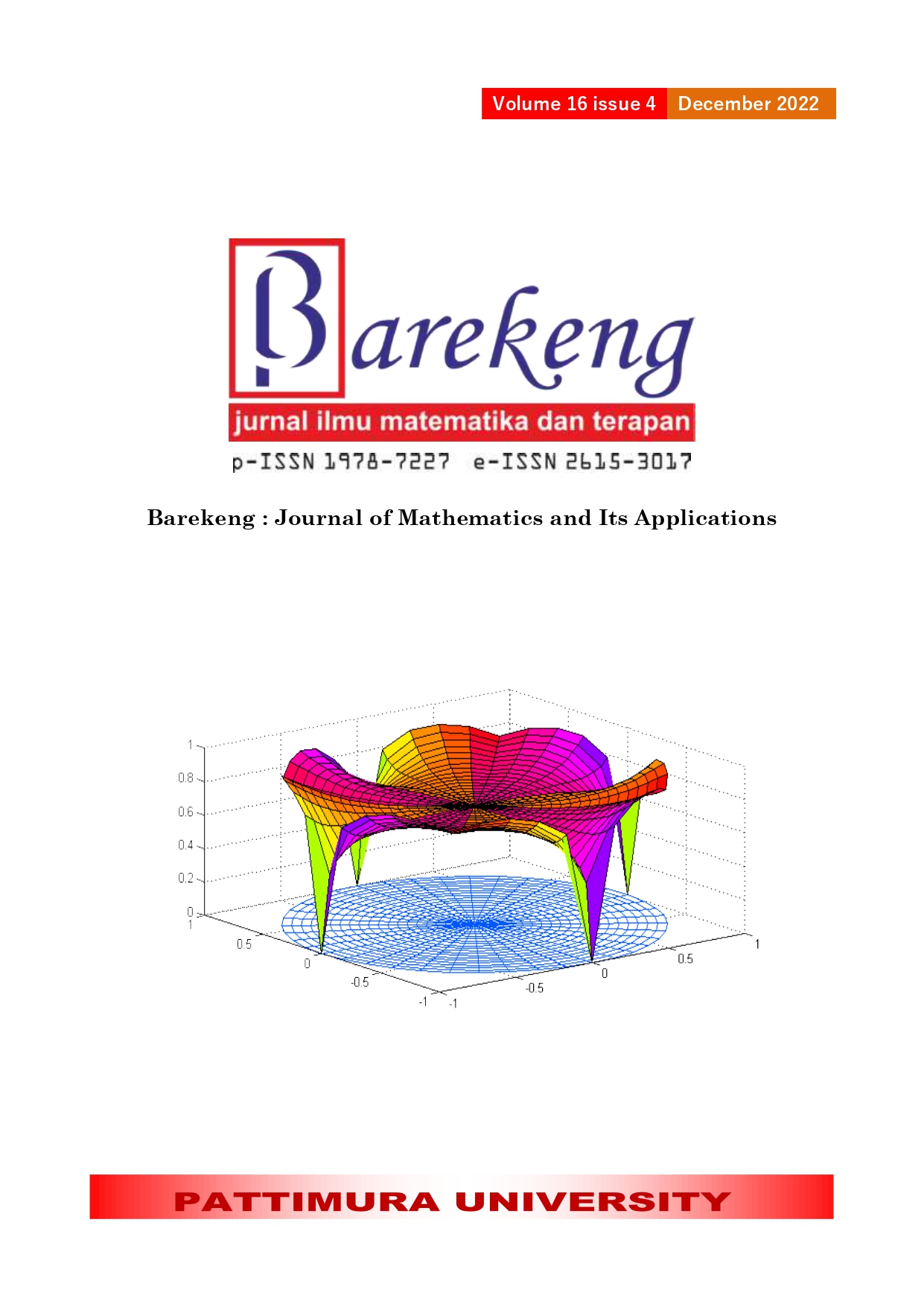COMPARATIVE ANALYSIS OF VINCENTY AND GEODESIC METHOD APPROACHES IN MEASURING THE DISTANCE BETWEEN SUBDISTRICT OFFICES IN SALATIGA CITY
Abstract
Salatiga city has four subdistrict offices, namely Argomulyo Subdistrict, Sidorejo Subdistrict, Sidomukti Subdistrict and Tingkir Subdistrict. In this study, a comparative analysis of the distance between subdistrict offices in Salatiga city was conducted using the Vincenty method and Geodesic method with distance obtained from Google Maps. The data is the geographical coordinates of the Earth's surface (latitude and longitude) obtained from Google Earth. The results showed that both Vincenty and Geodesic methods compared with Google Maps calculation results between 95% -105%, so it can be said to be good. The geodesic method gives relatively better results than the Vincenty method because it has an average percentage of 99.58 %. In comparison, the Vincenty method has an average percentage of 99.48 %. However, the results obtained still use relatively less data.
Downloads
References
Badan Pusat Statistik Kota Salatiga, Kota Salatiga Dalam Angka 2021 [Salatiga City in Figures 2021]. Kota Salatiga, 2021.
A. Zaki, Keliling Dunia dengan Google Earth + Google Maps [Go Around the World with Google Earth + Google Maps]. Yogyakarta, 2010.
S. Huber and C. Rust, “Calculate Travel Time and Distance with Openstreetmap Data Using the Open Source Routing Machine (OSRM),” Stata J., vol. 16, no. 2, pp. 416–423, 2016, doi: 10.1177/1536867X1601600209.
X. Xia, “Design of Remote Real-Time Positioning Method for Long-Distance Running under Wireless Network Technology,” Secur. Commun. Networks, vol. 2021, 2021, doi: 10.1155/2021/5298736.
C. F. F. Karney, “Algorithms for geodesics,” J. Geod., vol. 87, no. 1, pp. 43–55, 2013, doi: 10.1007/s00190-012-0578-z.
V. T. Hung, “Development of a Document Classification Method By Using Geodesic Distance To Calculate Similarity of Documents,” Eastern-European J. Enterp. Technol., vol. 4, no. 2–106, pp. 25–32, 2020, doi: 10.15587/1729-4061.2020.203866.
A. Setiawan and E. Sediyono, “Using Google Maps and spherical quadrilateral approach method for land area measurement.,” 2017, pp. 85–88, doi: 10.1109/IC3INA.2017.8251745.
K. Crane, M. Livesu, E. Puppo, and Y. Qin, “A Survey of Algorithms for Geodesic Paths and Distances,” vol. 1, no. 1, 2020, [Online]. Available: http://arxiv.org/abs/2007.10430.
V. A. Windarni, D. A. Istiqomah, and A. Setiawan, “Penentuan Luas Lahan dengan Metode Pendekatan Lingkaran Berbasis Google Earth dan GADM untuk Wilayah Kabupaten Semarang,” ["Determination of Land Area with the Circle Approach Method Based on Google Earth and GADM for the Semarang Regency Area"] Transformtika, vol. 18, no. 2, pp. 151–160, 2021, doi: 10.26623/transformatika.v18i2.2740.
P. Trettner, D. Bommes, and L. Kobbelt, “Geodesic Distance Computation via Virtual Source Propagation,” Comput. Graph. Forum, vol. 40, no. 5, pp. 247–260, 2021, doi: 10.1111/cgf.14371.
A. Kadir, Langkah Mudah Pemprograman R. Jakarta, Indonesia: PT Elex Media Komputindo, 2019.
T. Vincenty, “Direct and inverse solutions of geodesics on the ellipsoid with application of nested equations,” Surv. Rev., vol. 23, no. 176, pp. 88–93, 1975, doi: 10.1179/sre.1975.23.176.88.
D. Sarkar and K. Deyasi, “Computing the Geodesic Distance between Two Points in a Polyhedral Solid,” Int. J. Adv. Sci. Eng., vol. 6, no. S1, pp. 21–24, 2019, doi: 10.29294/ijase.6.s1.2019.21-24.
V. Fisikopoulos, “Geodesic Algorithms: an Experimental Study,” Int. Arch. Photogramm. Remote Sens. Spat. Inf. Sci. - ISPRS Arch., vol. 42, no. 4/W14, pp. 45–47, 2019, doi: 10.5194/isprs-archives-XLII-4-W14-45-2019.
R. Basaria, A. Setiawan, and E. Sediyono, “Penentuan luas wilayah kabupaten dan kota di provinsi sulawesi tengah menggunakan metode poligon dengan bantuan google earth,” ["The determination of the area of regencies and cities in the province of Central Sulawesi uses the polygon method with the help of Google Earth"] J. Mercumatika J. Penelit. Mat. dan Pendidik. Mat., vol. 3, no. 1, p. 9, 2018.
V. A. Windarni and A. Setiawan, “The Determination of Village Area in Semarang Regency Using The Circle Method,” J. Mercumatika J. Penelit. Mat. dan Pendidik. Mat., vol. 6, no. 1, pp. 33–44, 2021.
H. Paunsyah, H. Mubarok, and R. N. Shofa, “Penentuan Jalur Terpendek menggunakan Google Maps API pada Sistem Informasi Geografis (SIG) Panti Sosial di Kota Tasikmalaya,” Innov. Res. Informatics, vol. 1, no. 1, pp. 1–6, 2019, doi: 10.37058/innovatics.v1i1.665.
I. B. Coskun, S. Sertok, and B. Anbaroglu, “K-nearest neighbour query performance analyses on a large scale taxi dataset: Postgresql vs. mongodb,” Int. Arch. Photogramm. Remote Sens. Spat. Inf. Sci. - ISPRS Arch., vol. 42, no. 2/W13, pp. 1531–1538, 2019, doi: 10.5194/isprs-archives-XLII-2-W13-1531-2019.
A. Hajar, I. Nabawi, L. Kartikawati, F. R. Yudana, S. Budi, and N. Prasetiyantara, “Pengolahan Data Spasial-Geolocation Untuk Menghitung Jarak 2 Titik,” ["Spatial-Geolocation Data Processing For Calculating 2-Point Distances"] Creat. Inf. Technol. J., vol. 8, no. 1, p. 32, 2021, doi: 10.24076/citec.2021v8i1.265.
R. A. Azdy and F. Darnis, “Use of Haversine Formula in Finding Distance between Temporary Shelter and Waste End Processing Sites,” J. Phys. Conf. Ser., vol. 1500, no. 1, 2020, doi: 10.1088/1742-6596/1500/1/012104.
D. Li and D. B. Dunson, “Geodesic Distance Estimation with Spherelets,” pp. 1–29, 2019, [Online]. Available: http://arxiv.org/abs/1907.00296.
Copyright (c) 2022 Vikky Aprelia Windarni, Adi Setiawan

This work is licensed under a Creative Commons Attribution-ShareAlike 4.0 International License.
Authors who publish with this Journal agree to the following terms:
- Author retain copyright and grant the journal right of first publication with the work simultaneously licensed under a creative commons attribution license that allow others to share the work within an acknowledgement of the work’s authorship and initial publication of this journal.
- Authors are able to enter into separate, additional contractual arrangement for the non-exclusive distribution of the journal’s published version of the work (e.g. acknowledgement of its initial publication in this journal).
- Authors are permitted and encouraged to post their work online (e.g. in institutional repositories or on their websites) prior to and during the submission process, as it can lead to productive exchanges, as well as earlier and greater citation of published works.






1.gif)



